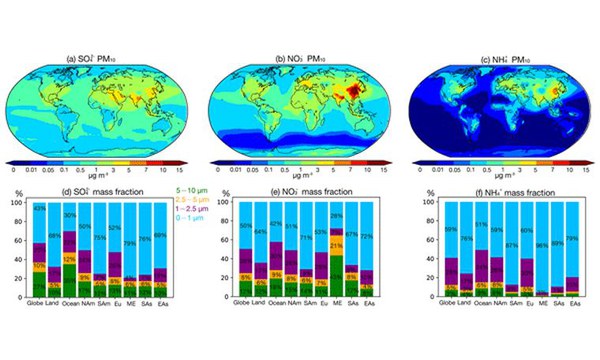The influence of ammonia emission inventories on size-resolved global atmospheric aerosol composition and acidity
Wang, X., Tsimpidi, A. P., Luo, Z., Steil, B., Pozzer, A., Lelieveld, J., and Karydis, V. A.
Abstract

Ammonia (NH3) is an abundant alkaline gas in the atmosphere and a key precursor in the formation of particulate matter. While emissions of other aerosol precursors such as SO2 and NOx have decreased significantly, global NH3 emissions are stable or increasing, and this trend is projected to continue. This study investigates the impact of NH3 emission changes on size-resolved aerosol composition and acidity using the atmospheric chemistry–climate model EMAC (ECHAM5/MESSy Atmospheric Chemistry). Rather than directly perturbing NH3 emissions, we employ three distinct emission inventories: two bottom-up inventories and one derived using an updated top-down method. The results reveal that sulfate–nitrate–ammonium aerosols in two fine-mode size ranges (0–1 and 1–2.5 µm) show the greatest sensitivity to NH3 emission changes. Regional responses vary depending on the local chemical environment of secondary inorganic aerosols. In “NH3-rich” regions (e.g., East Asia and Europe), the abundance of NH3 partially offsets the effects of reduced NH3 emissions when NOx and SO2 are available, especially for aerosols in the 1–2.5 µm range. This underscores the importance of coordinated control strategies for NH3, NOx, and SO2 emissions. Further, we find that NH3 has a buffering effect in densely populated areas, maintaining aerosol acidity at moderate levels and mitigating drastic pH shifts. While pH changes correlate strongly with NH3 variability, they are also influenced by concurrent changes in SO2 and NOx emissions. These results highlight the critical role of NH3 in shaping aerosol acidity, arguing for size-specific approaches to managing particulate matter.
